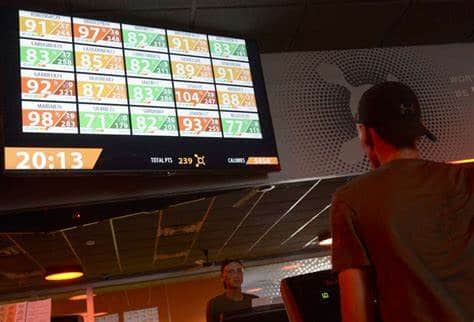
The other week I was asked on what my thoughts were on using Heart Rate monitors to completely to guide training.
There are some users who believe that it is the end all be all of getting great results, while others like myself think it can be effective if used correctly.
Like I always say when I am asked about a particular modality when it comes to training, there is a time and a place for everything.
It depends on what your goal is.
For elite endurance athletes, keeping tabs on heart rate before, during, and after training sessions will reveal a ton about how the athlete is adapting to the workout. This is important to know because cardiovascular strength for endurance athletes needs to be at a certain level in order to maintain elite status.
Endurance athletes rely mostly on the aerobic energy system, so seeing heart rate fluctuations provides great insight.
For general fitness, using heart rate guided training is a different case.
It has its benefits, and it has its drawbacks.
There are certain programs that are based on the premise of keeping your heart rate at a certain level in order to have a perceptively effective workout.
The intention is to keep the heart rate in a” fat burning” zone by doing high intensity activity with little rest. Orange Theory is well known for this mode of training, with more and more gyms adopting the same concept of using heart rate monitors to not only visually see heart rate on a screen, but motivate clients to “keep up” with the pace of others and beat a score.
Often time what you will see is compromised form or technique for the sake of doing more movement or activity just to get a higher score.
This can be absolutely effective, however, is this a way you should train every single workout? Everyday?
Do you really need to send your heart rate through the roof 5 days per week if you are just training for general fitness?
No not really.
There are multiple factors that go in to this like fitness level, your training goals, even your schedule.
A truly well-rounded fitness program will have a global approach, meaning you will not only focus on workouts emphasize a high heart rate aerobic capacity, but also focus on building strength, power, stability, and movement quality.
Training for max strength is just as much neurological as it is muscular. If you are training to increase your overall max strength, then it’s necessary to have increased rest times between sets (or complexes) so that the nervous system is close to fully restored.
The same is true for increasing max power. Rest should be increased for the nervous system to be nearly fully restored; hence, you don’t want to work against fatigue. This means it’s not necessary for your heart rate to be up. As a matter of fact, this can work against the intended effect of increasing max strength or max power. The primary energy source here is the ATp-CP system (Adenosine Tri-Phosphate-Create Phosphate).
This is the energy system primarily used for activity that lasts between 1-8 seconds. Shorter bursts, and can take up to 10 minutes to recover.
Strength and power endurance on the other hand allows for a little more increased heart rate as the goal here is to maintain power and strength output while resisting fatigue. This is the bread and butter of your Orange Theories and cross fit “style” programs.
A truly effective fitness program will cycle between the different modes of training and progressively build off the previous phase, no matter the fitness level.
When training for pure power, or strength, what the heart rate says really won’t mean much if the goal is to stay in a fat burning zone. You will be disappointed.
So my thoughts on using Heart Rate guided training is that it can be good, and it can be not so good.
Using them can be a step in the right direction. But when you solely workout out every single time just to keep a high heart rate, or get the highest amount of accolade points in a program, long term this can be problematic.
I will say that using them in a class setting does make you want to work harder and increases competition.
If you have set a goal, and what you are doing is working, then keep going. However, if it is not, then consider change.
I encourage you to cycle between different modes of training throughout the year so that you not only avoid plateaus but accrue results that last longer.
Use heart rate monitors sparingly. Consider how much stronger you have gotten, how much more flexible, improved balance, mood. Heart rate won’t tell you this ALL of the time.
